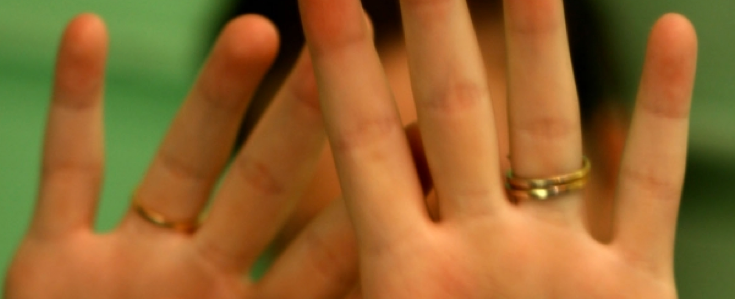What to do if You are a Victim of Revenge Porn
 Revenge and non-consensual pornography is a growing problem online. Leaked private photos, either through acts of malice or simple accidents means that more and more people, mostly women, are finding their personal photos on the public web, often with their names and personal information attached.
Revenge and non-consensual pornography is a growing problem online. Leaked private photos, either through acts of malice or simple accidents means that more and more people, mostly women, are finding their personal photos on the public web, often with their names and personal information attached.
The impact of these leaked photos can be dire. According to a survey by the Cyber Civil Rights Initiative, 93% of all victims have experienced emotional distress and nearly half were harassed or stalked by strangers who saw the photos online.
Because of that, stopping revenge and non-consensual pornography has been a project of mine for several years. Myself and the people who work with me have put in hundreds of hours of pro bono time working to remove thousands of instances of revenge porn.
However, removing revenge pornography is a team effort. While people such as myself can help track and remove it, our efforts are most effective if everyone involved is working in tandem. On that front, there is a great deal that a victim can do to help make the process faster and more effective.
So, if you find yourself in the very unfortunate position of being a victim of revenge pornography, here are the steps you should take to not only ensure the best possible outcome, including, if possible, punishment for the person who published the images or videos.
Step 1: Remain Calm
When they first discover revenge pornography, victims go through a variety of emotions ranging from utter terror, to sadness to being nonplussed. None of these responses are wrong and all are perfectly reasonable.
However, it’s important, before doing anything, to take a deep breath and not act rashly. Acting out of strong emotions does nothing to help the situation and, in fact, can make things much worse.
As bleak as things can look at this time, it’s important to remain calm and remember that this is a legal matter in addition to a personal one. No matter what, you need to remember that there is hope and that this is not the end but the next steps you take are critical and will determine the likely outcome of the situation.
Step 2: Assess the Original Work
The most important thing to do right away is to begin assessing the situation. That is going to mean multiple steps but the place to start is with the original work(s) involved.
With that in mind, be prepared to answer the following questions about the work.
- How many works are involved?
- What kinds of works are they? (images, videos, etc.)
- Did you take the original works? If not, who did?
- Were you over the age of 18 when the images/videos were taken?
- Where were the images/videos hosted and how were they posted publicly?
While you may not be able to answer the last question, finding out where they were hosted and how they were leaked online may play a crucial role in determining the enforcement steps that come later.
For example, a case where images were leaked maliciously follows a different pattern than one where they were leaked accidentally. Knowing the starting point can help determine the strategy down the road.
Step 3: Determine the Severity of the Situation
If the content involved are images, use Google Image Search to see if they can be found elsewhere on line. If the content is video, you’ll likely have to do searches for just the title of the work as it exists online now.
If you find additional URLs where the files are, make a note of them. It will likely be helpful to keep a spreadsheet with all of the instances you find for easy tracking later.
Work to get as many URLs as you can but don’t obsess over getting every single one at this time. If the case is new, it’s possible that other cases may be popping up and haven’t appeared in Google. Instead, focus on the cases that you can find to understand the breadth and scope of the problem.
As you’re doing this, look at the information that’s on the sites. Is it just the images is there personal information attached?
With that information, you can then start determining what your goals should be in handling it.
Step 4: Establish Goals
Take a moment to think about what your goals are in this situation. While the ideal would obviously be that all of the images and videos are removed, it may not be practical. As such, it’s important to prioritize your goals so that the plan that follows can be tailored to them.
For most, the highest priority is getting the name and personal information out of Google and the other search engines. While the images and videos may still be out there, they are unlikely to still be connected to you without that information. Potential employers and new contacts, for example, aren’t likely to find them or connect them with you.
However, there are other questions to consider. How important is criminal sanctions to you? What about litigation? Etc.
Think about the ideal outcome of the situation and then settle on what is most important to you. This way, you will have a path to a perfect result, but a minimum that is necessary to move on.
Step 5: Seek Help
With that information in hand, you’re in a good position to begin seeking help. A great resource (and one that I work with) is the Cyber Civil Rights Initiative, which operates an End Revenge Porn campaign, that provides help to victims.
However, there are other organizations but they all work the same way. They gather the information about your situations, which is why the steps above were important, and then determine the best course of action. This course of action can include emotional support, filing police reports if criminal laws were broken, putting you in contact with attorneys to consider civil litigation and and directing you to individuals, such as myself, who can help get the content removed form the Web.
Knowing the basics of the situation and what you want accomplished helps a great deal in resolving the situation. It helps whoever you are working with direct you to the correct sources and helps those sources can focus their time and energy better into resolving the case.
Step 6: It Takes Time
Finally, remember that a case of nonconsensual pornography can take a great deal of time to handle if there is a lot of sharing of the work. Many of the sites involved in revenge porn are uncooperative and removals can take longer than with other types of content.
Even if things go smoothly, if there’s widespread misuse, it can take weeks or even months to really bring a case to heel. Even a single instance can stake several days or longer. If litigation or criminal investigations are involved, the time frame drags on even farther, with months or even years likely passing before any resolution.
Though it’s difficult to be patient, this will not be a problem that’s resolved overnight, if it ever is completely. Things will be ok, but it will take time. This is part of why relaying your priorities is so important, it makes it possible to tackle those issues first and then address the less urgent ones later.
But, even when a case is narrowed down, there is still a delay between when work starts and results are seen. Try to be patient and understand that everything possible is being done.
Bottom Line
Being a victim of revenge or nonconsensual pornography can be a very trying time. Dealing with it means navigating a web of legislation all the while wrangling with the emotional and personal toll it can take.
However, please know that you are not alone. There are those out there who are willing and able to support and help you including providing emotional support, legal counseling and content removal.
So, while it’s easy to feel alone and like there is nowhere to turn to, there is a virtual army of people who are waiting to help in a myriad of ways. Furthermore, the law is increasingly on your side and the tools you can use to fight back grow daily.
By working with those helping, you will find a light at the end of the tunnel. While there are no easy answers, there are solutions and plenty of people willing to help you find them.
Want to Reuse or Republish this Content?
If you want to feature this article in your site, classroom or elsewhere, just let us know! We usually grant permission within 24 hours.
